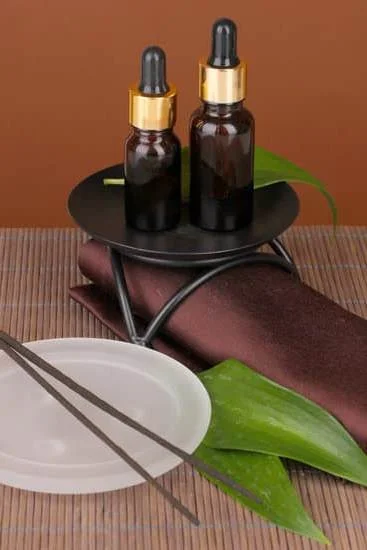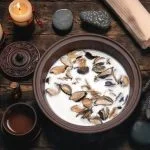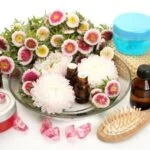Aromatherapy is a therapeutic practice that utilizes the natural scents of essential oils to promote healing and well-being. It has gained popularity in recent years due to its numerous benefits and holistic approach to health.
But where does aromatherapy originate from and how did it become such an integral part of various cultures around the world? In this article, we will explore the rich origins and global influence of aromatherapy, providing insights into its early history, ancient practices, and modern applications.
Aromatherapy involves the use of essential oils derived from plants to enhance physical and emotional well-being. These oils are usually obtained through distillation or cold pressing methods, capturing the purest essence of the plant’s fragrance. When inhaled or applied topically, these oils can stimulate various reactions in the body, affecting mood, stress levels, pain perception, and overall health.
The practice of using aromatics for healing dates back to ancient civilizations. From Egypt to China, India to Europe, aromatic plants were revered for their therapeutic properties and religious significance. The Egyptians used essential oils and herbs for both medicinal purposes and religious rituals. Ancient Chinese medicine incorporated aromatic plants into their practices to restore balance and promote harmony within the body. In Ayurveda, the ancient Indian healing system, aromatherapy played a vital role in balancing energies known as doshas.
As we journey through history, we will discover how aromatherapy experienced a revival in Europe during Renaissance times and spread across the continent. We will also explore its development as a distinct practice in the 20th century and its continued appreciation worldwide today. So join us as we uncover the fascinating origins of aromatherapy that have shaped its evolution into a global phenomenon embraced by many cultures for centuries.
Early History of Aromatherapy
The early history of aromatherapy is deeply rooted in ancient civilizations and their use of aromatic plants. These civilizations recognized the healing properties and benefits of various plants and utilized them in different ways for therapeutic purposes.
Ancient civilizations such as the Egyptians, Greeks, Romans, and Chinese were among the pioneers in harnessing the power of aromatherapy. They discovered that certain plants possessed potent scents and beneficial properties that could be used to improve physical, mental, and spiritual well-being.
The Egyptians, for example, were known for their extensive use of essential oils and herbs for healing practices as well as religious rituals. They believed that these aromatic substances possessed mystical powers that could connect them to the gods and promote healing. They utilized methods such as distillation to extract essential oils from plants like frankincense, myrrh, and lavender for medicinal purposes.
Similarly, ancient Chinese civilizations integrated aromatherapy into their traditional medicine practices. Traditional Chinese Medicine (TCM) emphasized the balance between yin and yang energies within the body, and aromatic plants played a significant role in achieving this balance. Chinese herbalists would prescribe specific aromatic herbs to treat various ailments and restore harmony within the body.
These ancient civilizations laid the foundation for the development of aromatherapy as a distinct practice. Their knowledge and understanding of plants’ therapeutic properties paved the way for further exploration and refinement of aromatherapeutic techniques throughout history.
| Ancient Civilization | Aromatic Plants Used | Methods of Utilization |
|---|---|---|
| Egyptians | Frankincense, myrrh, lavender | Distillation for extraction of essential oils |
| Chinese | Ginger, cinnamon, sandalwood | Ingestion, topical application, and inhalation |
| Greeks & Romans | Rosemary, chamomile, peppermint | Herbal preparations and aromatic baths |
Ancient Egyptian Aromatherapy
The ancient Egyptians were one of the earliest civilizations to use aromatherapy in their daily lives. They believed in the power of essential oils and herbs for healing and religious rituals. The use of aromatic plants was deeply intertwined with their culture, and they had a vast knowledge of different scents and their therapeutic properties.
Herbs and Essential Oils
In ancient Egypt, herbs and essential oils were considered sacred and were widely used for their medicinal properties. Practitioners would extract oils from various plants such as frankincense, myrrh, cedarwood, lavender, and rosemary. These oils were then used in various ways, including massage, bathing, inhalation, and even embalming practices.
Healing Purposes
Aromatherapy played a crucial role in the Egyptian healthcare system. Physicians would prescribe specific blends of essential oils to treat various ailments such as skin conditions, digestive issues, respiratory problems, and even mental health disorders. These aromatic blends were applied topically or inhaled to promote healing and restore balance within the body.
Rituals and Symbolism
Aside from its medicinal purposes, aromatherapy was an integral part of religious rituals in ancient Egypt. Egyptians believed that certain fragrances could connect them with the spiritual realm and the gods. They would burn incense made from aromatic resins during ceremonies to invoke divine blessings or ward off evil spirits.
The use of aromatherapy also extended to everyday life for Egyptians. Aromatic oils were commonly used for personal hygiene practices like perfuming oneself or as cosmetics by both men and women. The pleasing scents not only served a practical purpose but also had symbolic meaning associated with purification, protection, and beauty.
Ancient Egyptian aromatherapy laid the foundation for future developments in aromatherapy techniques across different cultures throughout history. Its influence can still be seen today in the diverse methods and widespread popularity of aromatherapy as a holistic healing practice.
Aromatherapy in Ancient China
Aromatherapy has deep roots in ancient civilizations, and one such civilization that played a significant role in its development is Ancient China. Traditional Chinese Medicine (TCM) has a long history dating back thousands of years, and aromatic plants have been an essential component of this healing system. In ancient China, aromatic plants were used for their medicinal properties, as well as for spiritual and religious purposes.
In TCM, the use of aromatic plants is based on the principle of balance and harmony within the body. It is believed that certain scents can affect the flow of energy or qi in the body, promoting healing and well-being. Aromatherapy was commonly used alongside other TCM practices such as acupuncture, herbal medicine, and massage.
One key practice in ancient Chinese aromatherapy was the burning of incense. Incense was made from a variety of aromatic plant materials such as sandalwood, cedarwood, cinnamon, and frankincense. The smoke produced by burning these incense sticks was believed to purify the air and ward off evil spirits. It was also used to create a calming atmosphere during meditation or religious ceremonies.
The use of aromatic herbs and oils for medicinal purposes was also prevalent in ancient China. These herbs were often prescribed based on their unique properties, such as warming or cooling effects on the body. They were used to treat various ailments including digestive issues, respiratory conditions, muscular pain, and emotional imbalances.
Overall, aromatherapy in ancient China played an integral role in Traditional Chinese Medicine and had a profound impact on the development of this holistic healing system. The use of aromatic plants for both physical and spiritual well-being continues to be practiced today in TCM clinics worldwide. Understanding the roots of aromatherapy helps us appreciate its rich history and global influence on health and wellness practices today.
Aromatherapy in Ayurveda
Aromatherapy has a rich history that dates back thousands of years, with its origins deeply rooted in ancient healing systems from around the world. One such system is Ayurveda, the traditional Indian medicine that has been practiced for over 5,000 years. In Ayurveda, aromatherapy plays a significant role in promoting health and well-being through the use of essential oils and herbs.
Ancient Wisdom
Ayurveda, which translates to “knowledge of life,” is based on the belief that everything in the universe is interconnected. According to Ayurvedic principles, maintaining balance and harmony between the mind, body, and spirit is essential for good health. Aromatherapy is seen as an integral part of this holistic approach to healing. Essential oils derived from plants are believed to possess specific therapeutic properties that can help restore balance and promote healing on all levels.
The Five Senses
One important aspect of Ayurveda is the recognition of our senses as pathways to healing. In addition to touch, taste, sight, and sound, smell holds immense importance in Ayurvedic practices. The sense of smell is considered a direct pathway to our emotions and consciousness. Aromatherapy harnesses this connection by using aromatic plants and their essential oils as a way to stimulate or calm our senses and influence our overall well-being.
Traditional Uses
In Ayurveda, aromatherapy is used in various ways depending on an individual’s dosha or constitutional type. Herbal oils are commonly used for massage therapies known as Abhyanga, where they are applied topically to create harmony within the body and mind.
Inhalation techniques utilizing diffusers or steam inhalation methods are also employed to reach deeper levels of relaxation or relieve respiratory concerns. Ayurvedic practitioners also use herbal-infused oils for scalp treatments, known as Shirodhara, which promote mental clarity and tranquility.
Aromatherapy’s incorporation into Ayurveda has provided a comprehensive approach to healing that encompasses not only physical ailments but also emotional and spiritual well-being. The ancient wisdom of Ayurveda has undoubtedly influenced the modern practice of aromatherapy, making it an integral part of holistic healthcare systems around the world today.
Renaissance and European Aromatherapy
During the Renaissance period in Europe, there was a renewed interest in medicine and healing practices. This led to the revival of aromatherapy as a popular form of alternative medicine. European scholars and physicians began studying ancient texts from various civilizations that mentioned the use of aromatic plants for therapeutic purposes. They rediscovered the wisdom of these ancient practices and started incorporating them into their own medical treatments.
One key figure in the revival of aromatherapy during this time was Paracelsus, a Swiss physician, who is often referred to as the “father of pharmacology.” Paracelsus believed in the power of nature and emphasized the use of herbs and essential oils for healing purposes. His teachings greatly influenced other physicians and healers across Europe to explore the potential benefits of aromatherapy.
With advancements in technology, distillation techniques were refined during this period, allowing for more effective extraction of essential oils from plants. This led to a wider availability of essential oils and increased their use in various applications such as perfumes, cosmetics, and medicinal preparations.
As European explorers ventured to different parts of the world, they encountered new aromatic plants and spices that were not native to Europe. These discoveries further enriched Europe’s knowledge and understanding of aromatherapy. The trade routes established during this time played a significant role in spreading these new aromatic plants across the continent.
The Renaissance period marked a pivotal time for aromatherapy as it experienced resurgence in popularity within Europe. The knowledge gained during this period laid the foundation for modern aromatherapy practices that are widely used today.
Modern Aromatherapy
In the 20th century, aromatherapy underwent a significant transformation and emerged as a distinct practice. This development was influenced by various factors, including scientific research, advances in technology, and the increasing interest in natural healing modalities. As a result, aromatherapy gained recognition as a therapeutic discipline with its own principles and techniques.
One of the key developments in modern aromatherapy was the establishment of standardized methods for extracting essential oils from plants. This allowed for consistent quality and purity of essential oils, ensuring their effectiveness and safety in therapeutic applications. Additionally, advancements in distillation techniques led to the discovery of new essential oils that were previously unknown or underutilized.
Another important milestone in the development of modern aromatherapy was the scientific research conducted on the properties and effects of essential oils. Scientists began studying their chemical composition and pharmacological properties, providing evidence for their therapeutic potential. This research not only contributed to our understanding of how essential oils interact with the body but also helped validate their use in clinical settings.
In addition to scientific advancements, the growing popularity of natural health practices in the 20th century also played a significant role in shaping modern aromatherapy. As people sought alternative approaches to wellness, aromatherapy gained traction as an effective and holistic modality. Its ability to promote relaxation, reduce stress, alleviate pain, and support overall well-being made it an appealing choice for many individuals looking to enhance their health naturally.
Today, modern aromatherapy is widely practiced and appreciated worldwide. It has integrated into various healthcare settings, including hospitals, clinics, spas, and wellness centers. In addition to its therapeutic benefits, aromatherapy has also become popular among individuals seeking self-care rituals that promote mindfulness and emotional well-being.
Overall, the development of aromatherapy as a distinct practice in the 20th century has paved the way for its widespread use and recognition today. With its rich history, global influences, and ongoing research, aromatherapy continues to evolve and enrich the field of natural healing.
Contemporary Aromatherapy
Aromatherapy has come a long way since its early origins in ancient civilizations. In contemporary times, it has evolved into a distinct practice that is widely appreciated and practiced worldwide. Today, aromatherapy is used for various purposes ranging from relaxation and stress relief to managing certain health conditions.
One of the most common ways aromatherapy is practiced today is through the use of essential oils. These volatile plant extracts are obtained from various parts of aromatic plants such as leaves, flowers, bark, and roots. Essential oils can be diffused into the air using diffusers, applied topically to the skin after dilution with carrier oils, or inhaled directly for their therapeutic benefits.
Contemporary aromatherapy is also popularly used in spa settings for relaxation and rejuvenation purposes. Many spas offer aromatherapy massages where specific essential oils are carefully selected based on their therapeutic properties and blended into massage oils. The soothing scents of these oils help promote deep relaxation while the massage techniques further enhance their effects.
Moreover, aromatherapy has gained recognition in complementary medicine practices as well. In hospitals and healthcare settings, aromatherapy is being integrated into care plans to support patients’ emotional well-being and alleviate symptoms associated with conditions such as anxiety, depression, pain, and insomnia. Aromatherapists work alongside healthcare professionals to develop individualized treatment plans using essential oil blends tailored to meet each patient’s needs.
Conclusion
In conclusion, the origins of aromatherapy can be traced back to ancient civilizations around the world. From the Egyptians and their use of essential oils and herbs for healing and religious rituals to the Chinese and their incorporation of aromatic plants into Traditional Chinese Medicine, aromatherapy has a rich history that spans across cultures and time periods.
The practice of aromatherapy also found its place in the ancient Indian healing system, Ayurveda, where it was used to balance the mind, body, and spirit. During the Renaissance period in Europe, aromatherapy experienced a revival, with Europeans rediscovering its therapeutic benefits. This led to its spread across the continent and eventually to its development as a distinct practice in the 20th century.
Today, aromatherapy continues to be practiced and appreciated worldwide. Its influence can be seen in various forms, from essential oil diffusers in homes to spa treatments that incorporate aromatic oils. The healing properties of essential oils are now widely recognized and utilized in both alternative and conventional medicine.
Frequently Asked Questions
What Culture Is Aromatherapy?
Aromatherapy is a practice that originates from ancient cultures, particularly the Egyptians, Greeks, and Chinese. These cultures recognized the benefits of using essential oils derived from plants for healing purposes.
Aromatherapy is not limited to a specific culture, as its knowledge and practices have spread worldwide and are now embraced by people from various cultural backgrounds. The use of aromatherapy has evolved over time, combining traditional wisdom with modern scientific advancements.
What Is the Root of Aromatherapy?
The root of aromatherapy can be traced back to the use of aromatic plants and their extracts in ancient civilizations. It is believed that the ancient Egyptians were among the first to harness the power of essential oils by using them in rituals, cosmetics, and medicinal preparations.
The Greeks also played a significant role in developing the concept of aromatherapy through their studies on plant essences and their therapeutic properties. Over time, these practices were further developed and refined by different cultures around the world into what we now know as aromatherapy.
What Is the Origin of Aromatherapy Massage?
Aromatherapy massage has its roots in both ancient eastern and western traditions. In eastern cultures such as India and China, massage techniques have been practiced for thousands of years as part of traditional medicine systems like Ayurveda and Traditional Chinese Medicine (TCM). These systems often incorporate aromatic oils into their massage treatments to enhance relaxation and promote overall well-being.

Are you looking for a natural way to improve your health and wellbeing?
If so, aromatherapy may be the answer for you.





